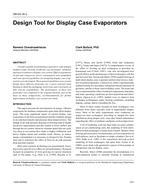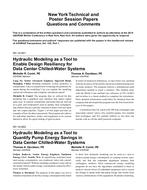Ground Source Heat Pump (GSHP) systems offer benefits over conventional HVAC systems. By utilizing the ground’s neutral temperature over the year, heating and cooling loads can be satisfied with minimal effort on the system. The "minimal" effort is described through a Coefficient of Performance (COP) or Energy Efficiency Rating (EER) that is used to classify the projected performance of a heat pump during its heating and cooling modes, respectively. By optimizing the Entering Water Temperature (EWT) of all the heat pumps from the ground loop, a 1-1.4% increase in COP/EER can be obtained for virtually every 1°F/0.6°C you achieve in increasing/decreasing the EWT. Understanding how the GSHP loop operates and controls the EWT for the heat pumps may offer some improvement for the entire system. In this case, a primarysecondary GSHP loop will be examined and optimized to create the optimal EWT for the facility in respect to the buildings HVAC load at the time. This primary-secondary loop configuration offers opportunities in the operational sequence and a further look into two options shows that a sliding EWT setpoint sequence for the secondary loop is beneficial to the heat pump performance. Therefore, by allowing the EWT setpoint to vary in the summer and winter, the system will perform more efficiently and reduce overall energy consumption.
Citation: ASHRAE Conference Papers, Dallas, TX.
Product Details
- Published:
- 2013
- Number of Pages:
- 8
- File Size:
- 1 file , 700 KB
- Product Code(s):
- D-DA-13-C034


